“Bell Tower,” I said in English, the actual name of the famous Xi’an landmark having slipped my mind. I didn’t have any pictures of it saved in my phone, and since the SIM card desk inside the airport had only accepted WeChat payments, I was unable to get online and show the taxi driver where I wanted to go.
Soon a couple of police officers, a janitor and a man waiting for his wife to exit the arrivals area huddled around the car, the sky above us pitch black on account of the late hour. All befuddled, they let out moans in near-unison, a disappointment as deep as the pit the Terracotta Army stands in. Who does this lao wai think he is?
I certainly couldn’t defend myself. I’d once called the Middle Kingdom home, after all—I knew better than to set foot on Chinese soil without well-oiled Mandarin, or an internet-connected app to make up for mine being as rusty as it was.
I’d been taking out my frustration on an index card someone at the airport exit had given me, when the thought occurred to me that I should take a look at it. Sure enough, a crude drawing of the Bell Tower was right in the center of the now-crumpled leaflet. “Zhe li,” I pushed it toward the face of the driver, who quickly put on a pair of reading glasses. “Wo yao qu zhe li!”
He laughed and said something to all the others too quickly for me to understand it, then turned back in my direction. “Zhong Lou,” he pointed to the icon on the sheet of paper and gave me a thumbs up.
Zhong Lou, I repeated under my breath as we began speeding toward the city center, my face as red as the Ming-era monument glowed when I finally laid eyes upon it about 45 minutes later. Ai yo, Zhong Guo.

A good move, it turns out.
“I’m not from here,” Phoebe, a Yunnanese girl I’d met in my guesthouse, insisted over a bowl of Niu Rou Mian, a beef soup with hand-pulled noodles I would soon conclude was the provincial capital’s only redeeming quality. “So you don’t need to be diplomatic.”
A dystopian cacophony of slate skyscrapers, buckling bridges and smoker’s coughs crowded along the banks of the Yellow River, Lanzhou matched the picture I imagine many Asiaphobic foreigners have of urban China, but whose prominence I’ve sought to downplay during my many journeys though the country.
Claryvan, a Dutch woman who inexplicably owned the most popular hotel in adjacent Xiahe, tourism hub of Gansu’s Gannan autonomous Tibetan prefecture, was even more pointed in her criticism. “Lanzhou is a shithole,” she winked playfully, “to use the words of your president.”
Xiahe, of course, presented its own complications to the critically-minded traveler, in spite of how pleasurable walking along the prayer wheel-lined perimeter of its sprawling Labrang Monastery was. (Though locals, thankfully, possessed just as much candor as imports like Claryvan.)
“If I point at him,” the middle-aged man said between puffs of his pipe, “that police officer over there will come and arrest me.”
He’d called me over to him as I exited Nomad Restaurant, the scent of yak-meat momos no doubt still on my breath, and was referring to the rigid, metal Chinese flags that lined the town’s main boulevard, affixed to every light pole as far as the eye could see. “I fucking hate that piece of red toilet paper and its yellow shit stars—I am Tibetan, and this is Tibet.”
Encounters like these (thought not so much the momos, at least not yak-filled ones) made me wish I could visit Tibet-proper without a Han Chinese guide, or at least that I’d planned to spend the subsequent two weeks exploring Tibetan-majority towns, rather than locales farther north and west in Gansu.
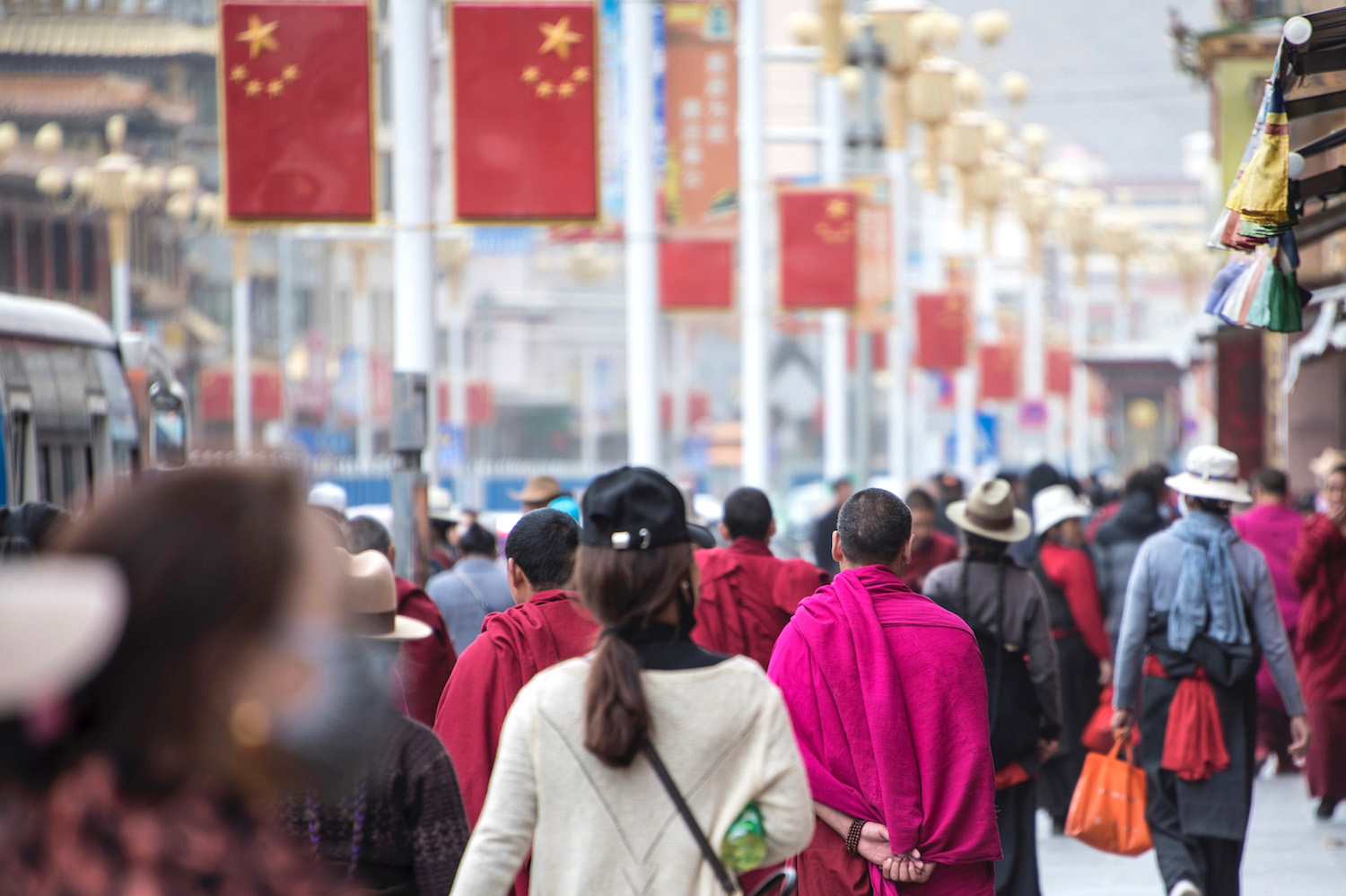
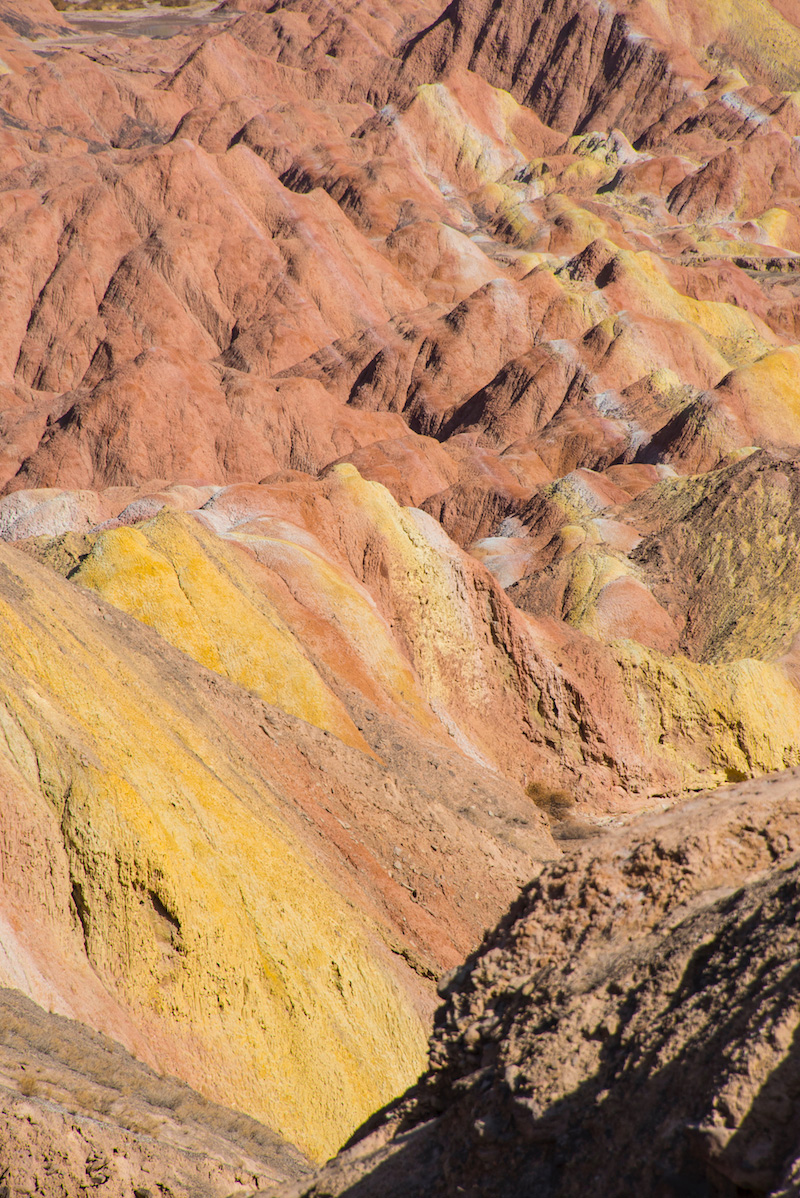

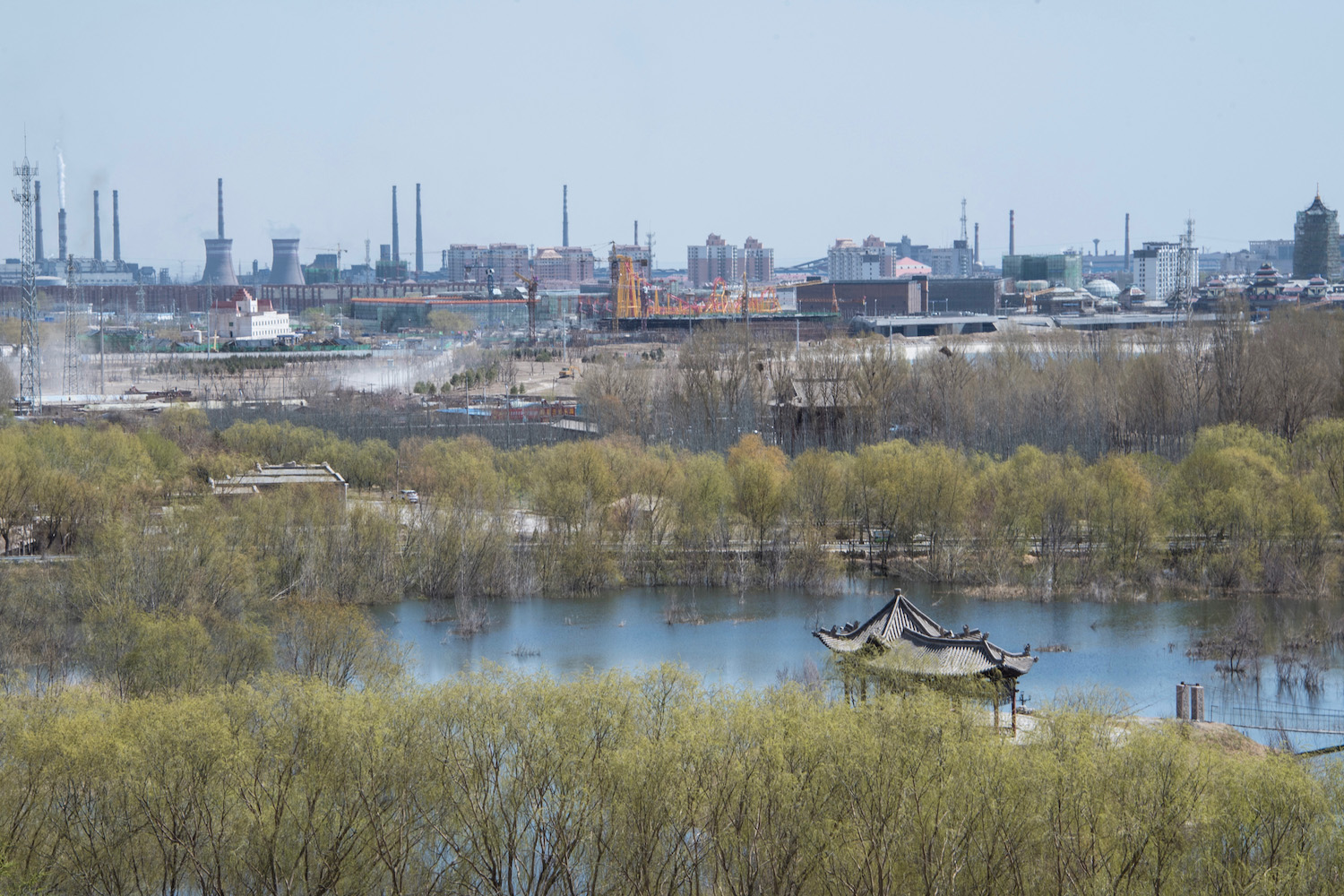
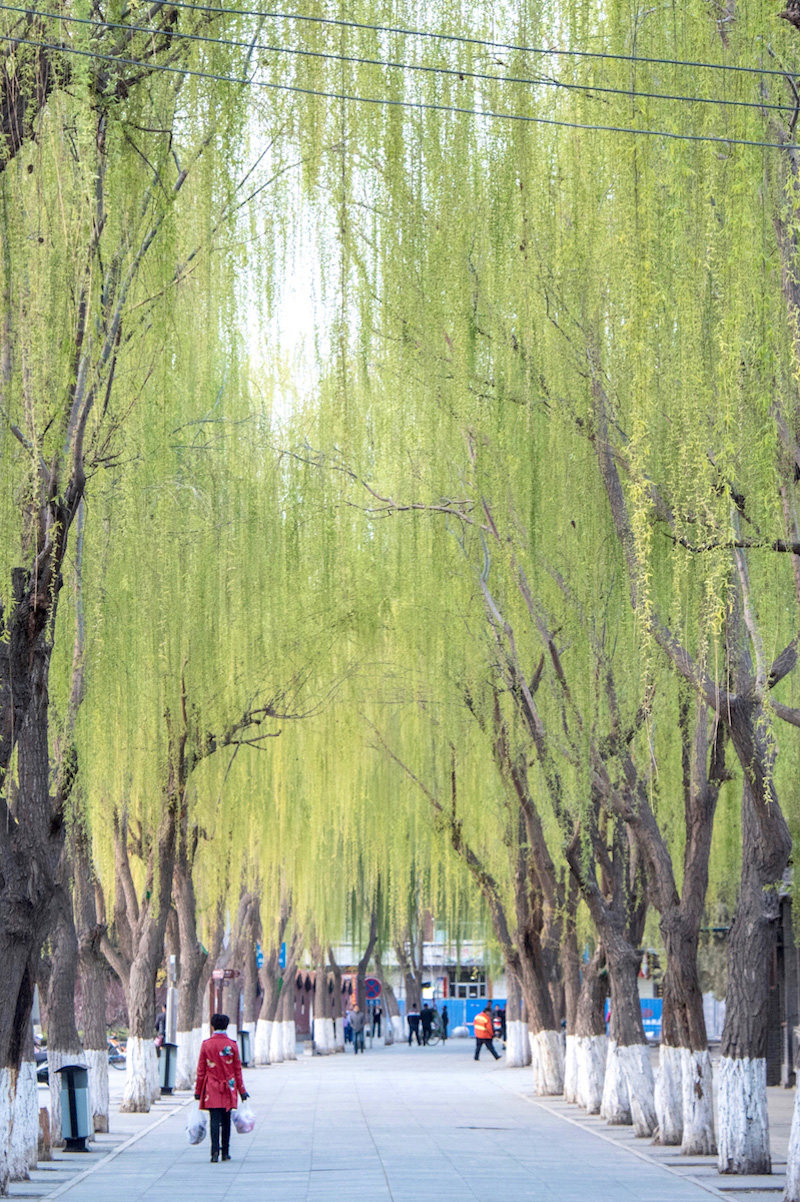
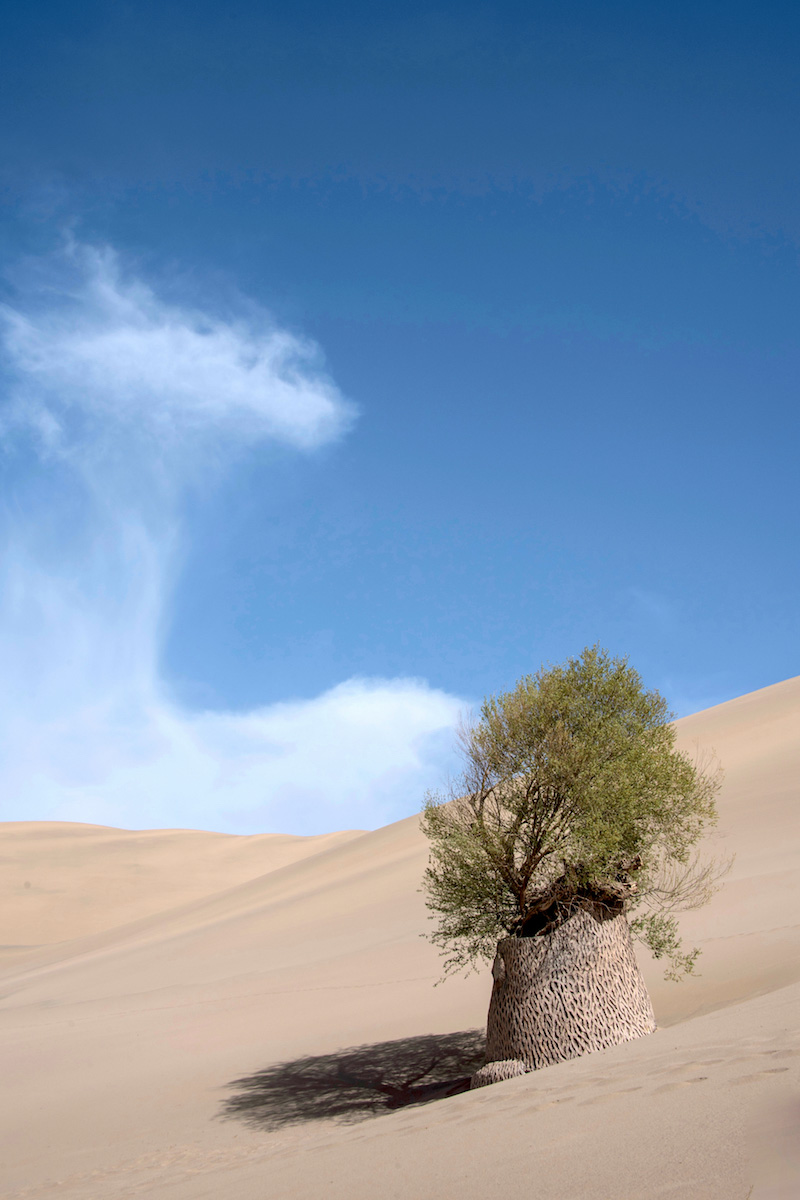
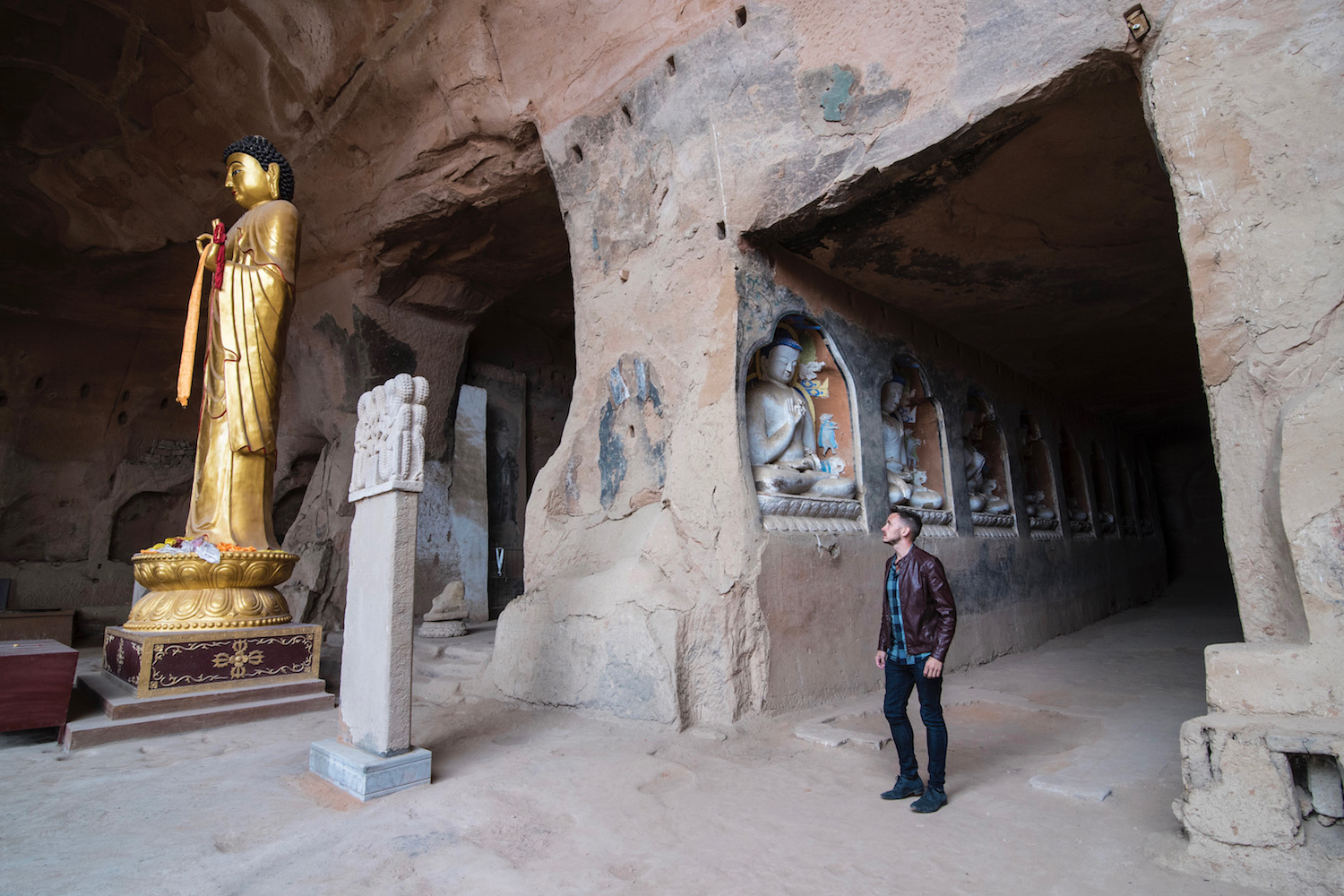
Instead, I set off the next morning on the long journey to the city of Zhangye, the sunny skies and 25ºC temperatures of the previous day replaced with a blanket of clouds and wet snow flakes falling awkwardly from it. Zhangye was decidedly not-Tibetan, even if the second-most famous attraction in its vicinity (the cliff-hewn grottoes of Matisi Temple) dates back to the time of King Gesar.
Number one, the increasingly hyped Danxia Landform, seemed like it could’ve existed in the southwestern United States. The orange, red and yellow striations striped onto its canyons and gorges specified neither of geography nor culture (apart from the fact that they perfectly matched the plate of fan qie chao dan I scarfed down for lunch—pure coincidence, no doubt).
My next stop, Jiayuguan, boasted a spread of sights that seemed, at least on paper, more impressive than what Zhangye had offered. But even taking into account the magnificence of Jiayu Pass, allegedly the oldest surviving section of the Great Wall, their collective wow factor proved insufficient to counteract the quantity of particulates the city’s power plants spewed into my lungs.
(I never felt for an instant like I was traveling along what was once the Silk Road, even as the fruits of Xi Jinping’s “One Belt, One Road” initiative blocked my bronchial tubes.)
The pre-eminence of industry over history was most evident, ironically, as I walked atop the restored walls of the Pass itself, the enormity and numerousness of cooling towers and smokestacks around it so great that I could hardly take a picture without a few of them in it.
In spite of this (and a snide remark from the taxi driver, who dismissed me as one of “the world’s peacekeeping police” on account of President Trump’s announcement of renewed military action in Syria), I remained enthusiastic as I made my way to the railway station well before dawn the next morning.
That’s because I was bound for Dunhuang, whose iconic “Pagoda of the Dunes” had been what convinced me I needed to come to Gansu in the first place. From my sleeper coach I spotted two-humped bactrians roaming through the Gobi Desert borderlands—camels are always a plus as far as I’m concerned.
The two sunsets I watched amid the sands proved not only satisfying, but illustrative of my two weeks in China’s Wild West as a whole.
Though I had to stand in a particular spot to enjoy myself, both along the shore of the Crescent Lake (to obscure the Disneyland-like crowds inside the souvenir-shop pagoda) and atop Mingshan Mountain (if I went too high, I could see the industrial hellscape on the horizon), the reality I created in doing so lived up to my expectations precisely.
I guess this actually is the easy part of my trip, I sighed in relief as my train pulled back into Xi’an 14 days after I first landed there, feeling as enchanted by the sight of the Bell Tower as I’d been stressed out about its name weeks earlier.

I don’t read Lonely Planet (for reasons I won’t go into here), but when I learned about halfway through my trip that Gansu had appear on the organization’s 2018 list of top Asia destinations, a single phrase came to mind: Get money, bitch!
Gansu, to its credit, is a culturally and ecologically complex region of a highly misunderstood country. It has a great deal to offer travelers who can see objective value in an experience, irrespective of how much they might enjoy it. But it is an immensely challenging destination, even if you speak a decent amount of Chinese, and even if you know what to expect in China outside Beijing and Shanghai.
When I imagine the average Lonely Planet reader turning up in Lanzhou or Xiahe or Dunhaung, I see visions of decisions being cursed and passports being burned. It is irresponsible for the publication to encourage the masses to visit a part of the world with inherently limited mass appeal, especially if my suspicions RE: remuneration are correct.
Follow in my footsteps and head to Gansu, but only once you’ve considered the entirety of this dispatch. See it not as a rant or a warning, but a lamp to light through the shadows (and, yes, the smog) that too often darkened my path.







